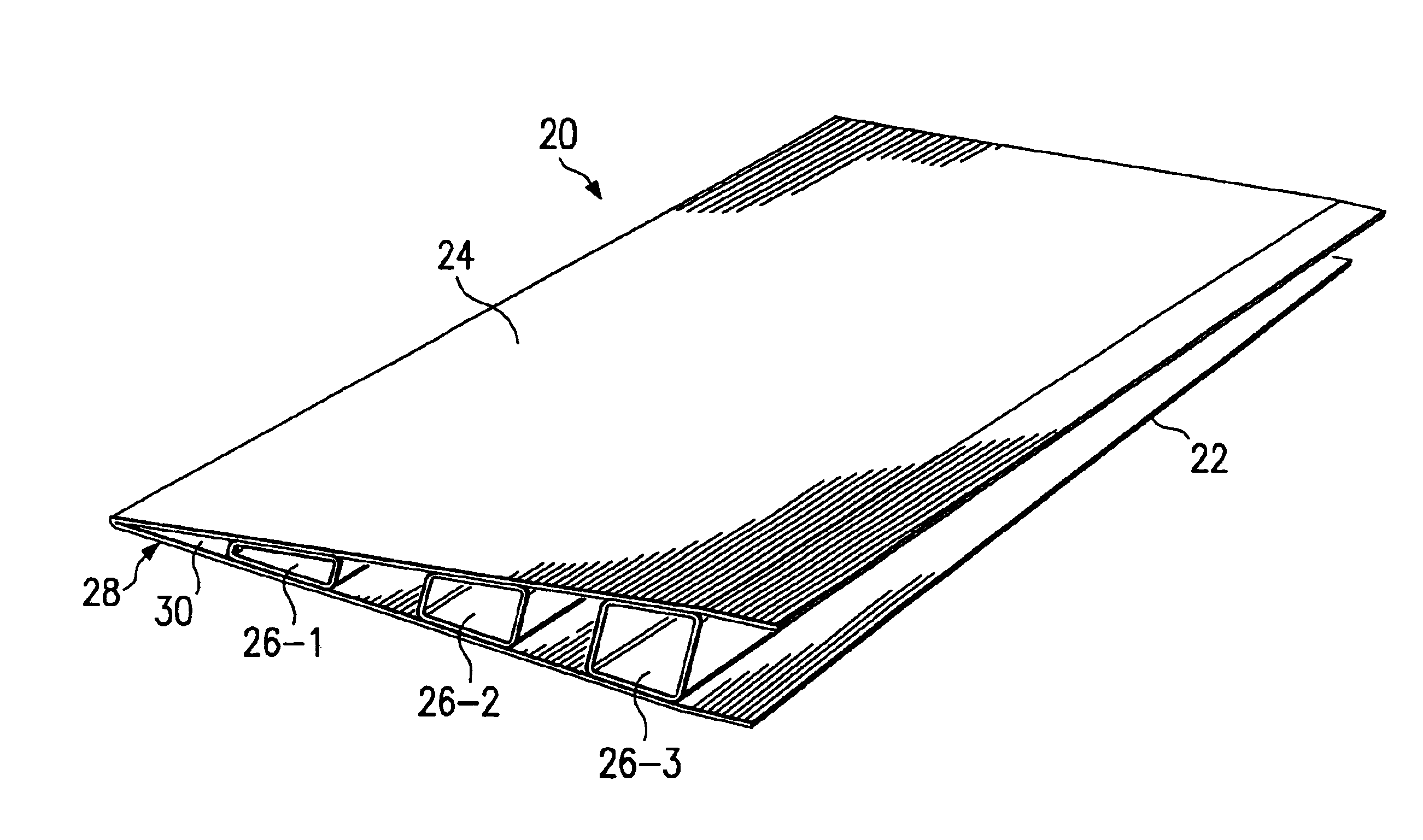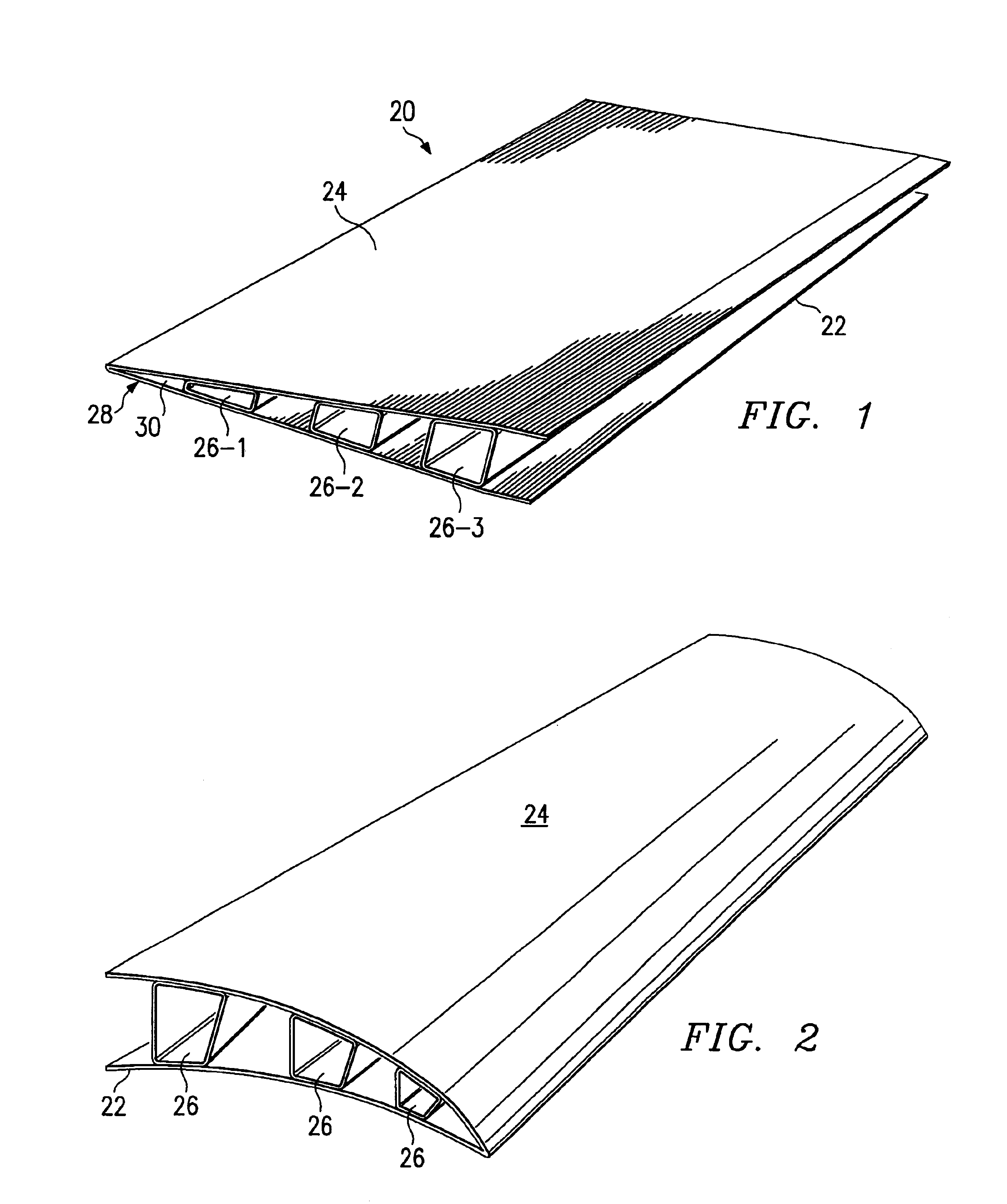Co-cured composite structures and method of making them
- Summary
- Abstract
- Description
- Claims
- Application Information
AI Technical Summary
Benefits of technology
Problems solved by technology
Method used
Image
Examples
Embodiment Construction
Referring to FIG. 1, the reference numeral 20 generally designates an aerostructure article constructed in accordance with a preferred embodiment of the invention. The article 20 is an advanced composite co-cured structure having a bottom skin 22, a top skin 24 and at least two (and usually several) elongated, laterally spaced-apart stiffener / spacer composite members 26-1, 26-2, and 26-3. The illustrated article 20 is in the general form of an airfoil, in which the skins 22 and 24 converge in a direction laterally of the stiffener / spacer members 26 and meet at an edge 28. An elongated wedge 30 of composite material stiffens and strengthens the edge 28.
Aerostructure articles of the present invention may vary considerably in shape and application, as shown by the examples of FIGS. 2 and 3. In that regard, the skins may be curved laterally or longitudinally or both laterally and longitudinally and be spaced apart at varying distances along go their lateral and longitudinal extents. The...
PUM
| Property | Measurement | Unit |
|---|---|---|
| Temperature | aaaaa | aaaaa |
| Length | aaaaa | aaaaa |
| Pressure | aaaaa | aaaaa |
Abstract
Description
Claims
Application Information
 Login to View More
Login to View More - R&D
- Intellectual Property
- Life Sciences
- Materials
- Tech Scout
- Unparalleled Data Quality
- Higher Quality Content
- 60% Fewer Hallucinations
Browse by: Latest US Patents, China's latest patents, Technical Efficacy Thesaurus, Application Domain, Technology Topic, Popular Technical Reports.
© 2025 PatSnap. All rights reserved.Legal|Privacy policy|Modern Slavery Act Transparency Statement|Sitemap|About US| Contact US: help@patsnap.com



